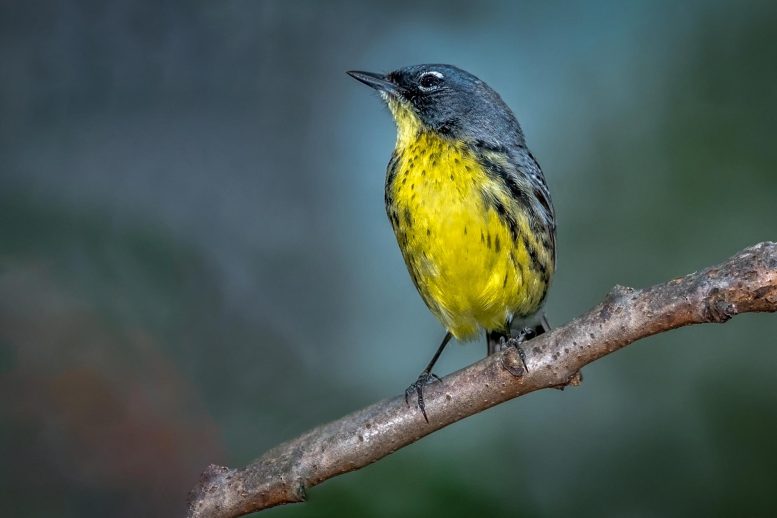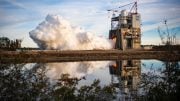
Kirtland’s Warbler (Setophaga kirtlandii).
Kirtland’s warblers (named after Jared P. Kirtland) are an endangered species of birds that, like so many humans, spend summer in North America and winter in the Bahamas. Now a new study using data from NASA’s Landsat satellites shows that these birds prefer to live in young forests and forests that have previously suffered a fire.
The birds have been listed as endangered since 1967 after a decline of over 50 percent of them in fewer than ten years was discovered. They like to nest on the ground in large areas of young jack pine trees. The problem is that these trees need fire to reproduce and thrive. In the 1960s fires were suppressed across Michigan and other nearby states. This is what caused the population decline. Their habitat was shrinking.
Now the birds are making an impressive comeback thanks to a recovery program that combats invasive cowbirds and at the same time controls forest burns. Things are now looking up for these songbirds. As of 1995, their numbers had tripled. However, these efforts were only underway at the Kirtland’s summer home, so a team of researchers studied the conditions of their winter getaway, the Bahamian island of Eleuthera, by putting together Landsat data to create images of the isle’s forest cover.
They confirmed that, just like in their summer home, these birds are found in young forests. On the island, these forests pop up after a fire, clearing for agriculture, or grazing by animals like goats. Of these, grazing seems to be the most attractive to them. Researchers suggest that goat grazing stunts the forest regrowth, allowing the ideal conditions for the birds.









Be the first to comment on "Kirtland’s Warblers Like To Live In Forests After A Fire"